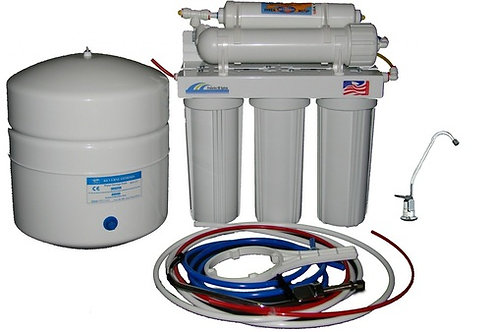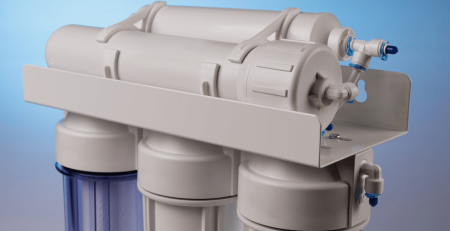Reverse Osmosis System: How It Works and What Are the Advantages
Get To Know and Learn How the Reverse Osmosis System Works and Its Advantages
Every day, the water treatment industry seeks new and different technologies capable of efficiently purifying this liquid, so precious for the survival of any living being. Among the most diverse methods of separating impurities and allowing safer consumption for humans is reverse osmosis.
And to understand how this system works, we first need to understand how the osmosis process works. This is the name given to the movement of water between media with different concentrations of solutes separated by a semi-permeable membrane. It is an important physicochemical process in cell survival.
In osmosis, water always moves from a hypotonic (less concentrated) to a hypertonic (more concentrated) medium in order to reach a concentration balance in both media, making them isotonic, through a semi-permeable membrane, that is, a membrane whose pores allow the passage of water molecules but prevent the passage of other molecules.
Reverse Osmosis (RO) is a separation process that uses high pressure to exactly force the opposite movement. That is, it is the process of forcing the solution from a region of high concentration through a membrane to a region of low concentration, through the application of an external pressure that exceeds the osmotic pressure.
How The Reverse Osmosis System Works
Reverse osmosis systems can contain several steps in residential-sized appliances, where basically the appliance has a carbon pre-filter to remove chlorine, in order not to deteriorate the membrane, and a filter to remove sediment, both before the water passes. through the osmosis membrane.
In industrial applications, devices can be larger and more complex, and depending on the quality of the water to be treated, pre-treatment through filter systems and even treatment stations may be necessary.
What Are the Applications of a Reverse Osmosis System?
Filtration through a reverse osmosis process has several applications. It is used, for example, to produce highly purified water for drinking water systems, industrial boilers, food and beverage processing, cosmetics, pharmaceutical production, electronics, horticulture, ice making, laboratories, metal finishing process, printing, vehicle washes, fishkeeping, among others, in addition to being used for residential applications.
In fact, industries are not the only ones to benefit from this technique. Even ship crews, fishermen, people who like to camp or inhabitants of countries where drinking water is polluted or of poor quality use reverse osmosis systems for desalination.
5 Advantages of Reverse Osmosis
– The water for feeding the treatment plant generally does not require heating; – They have fewer problems with corrosion; – Generally have lower power requirements; – Reverse osmosis water treatment process can remove unwanted contaminants such as trihalomethane precursors, pesticides and bacteria; – Reverse osmosis water treatment plants take up less surface area than distillation plants for the same amount of water production.
Ready. Now that you know the functioning, applications and advantages of a reverse osmosis system, it is easier to choose the product that best fits the needs of your home or business. Filter For Fridge has more than 15 years of experience in the water purification market, offering the best solutions at an unbeatable cost-effectiveness.
Visit www.filterforfridge.com and discover our product line for refrigerator water filters and for the most efficient water purification techniques known today.




